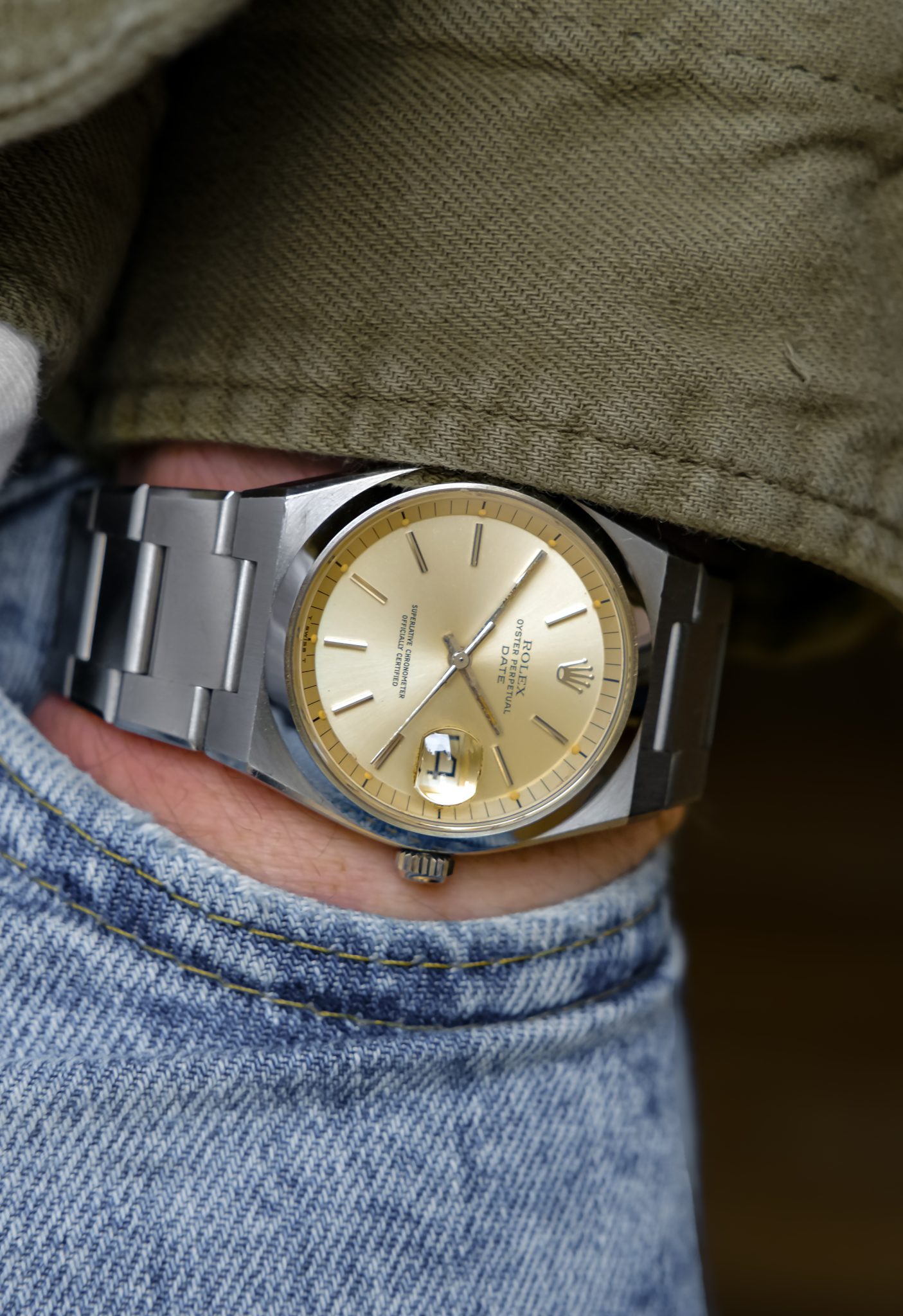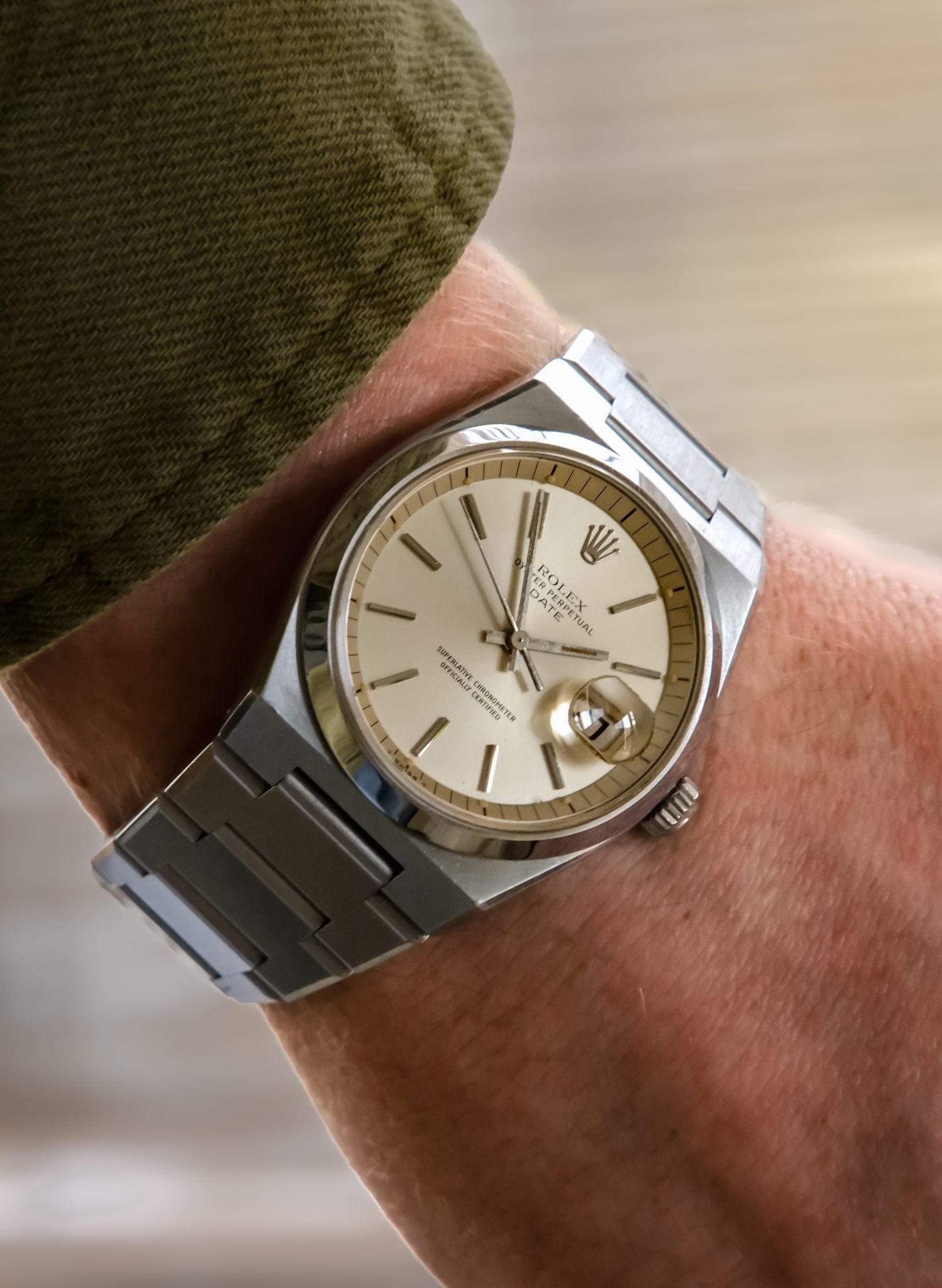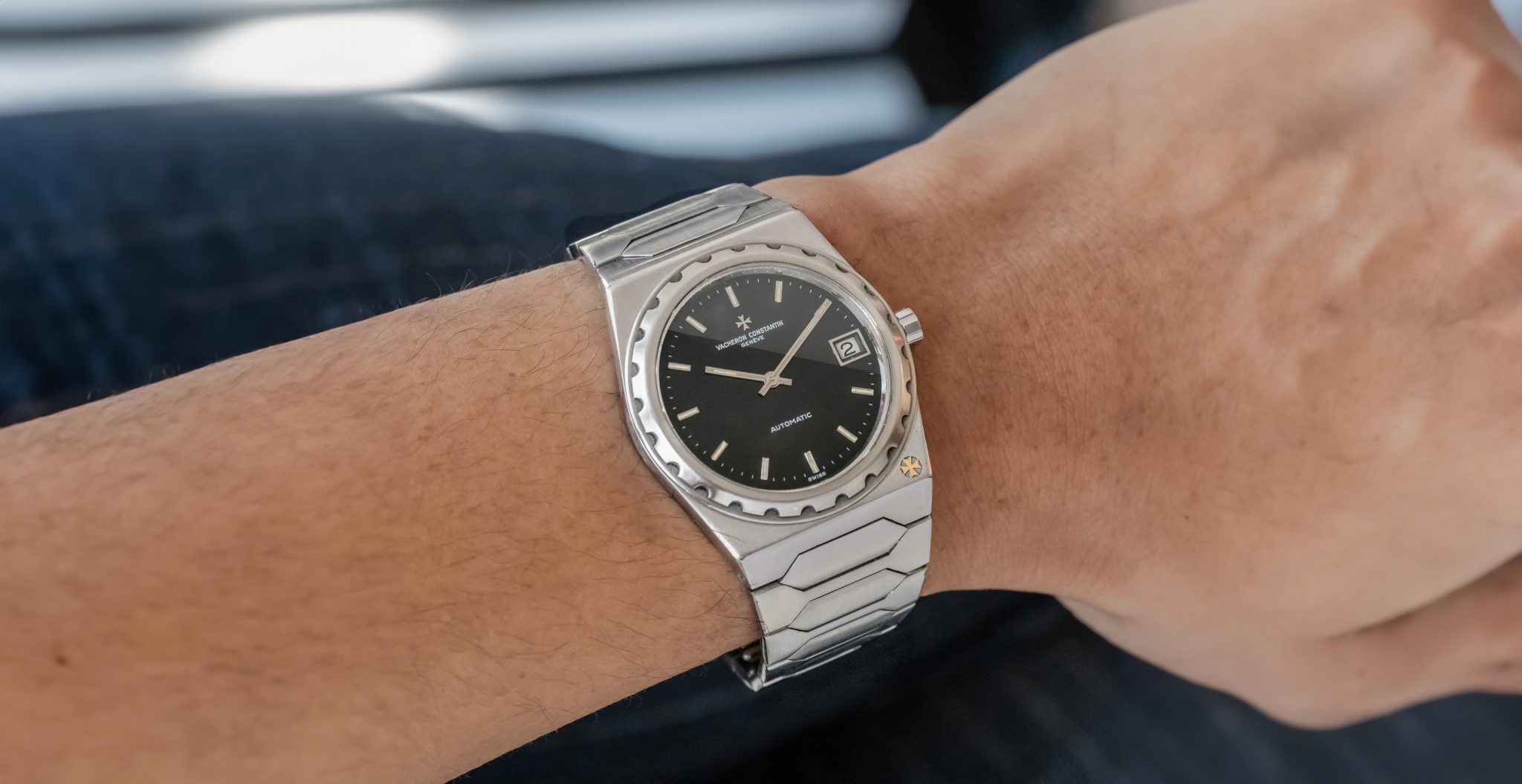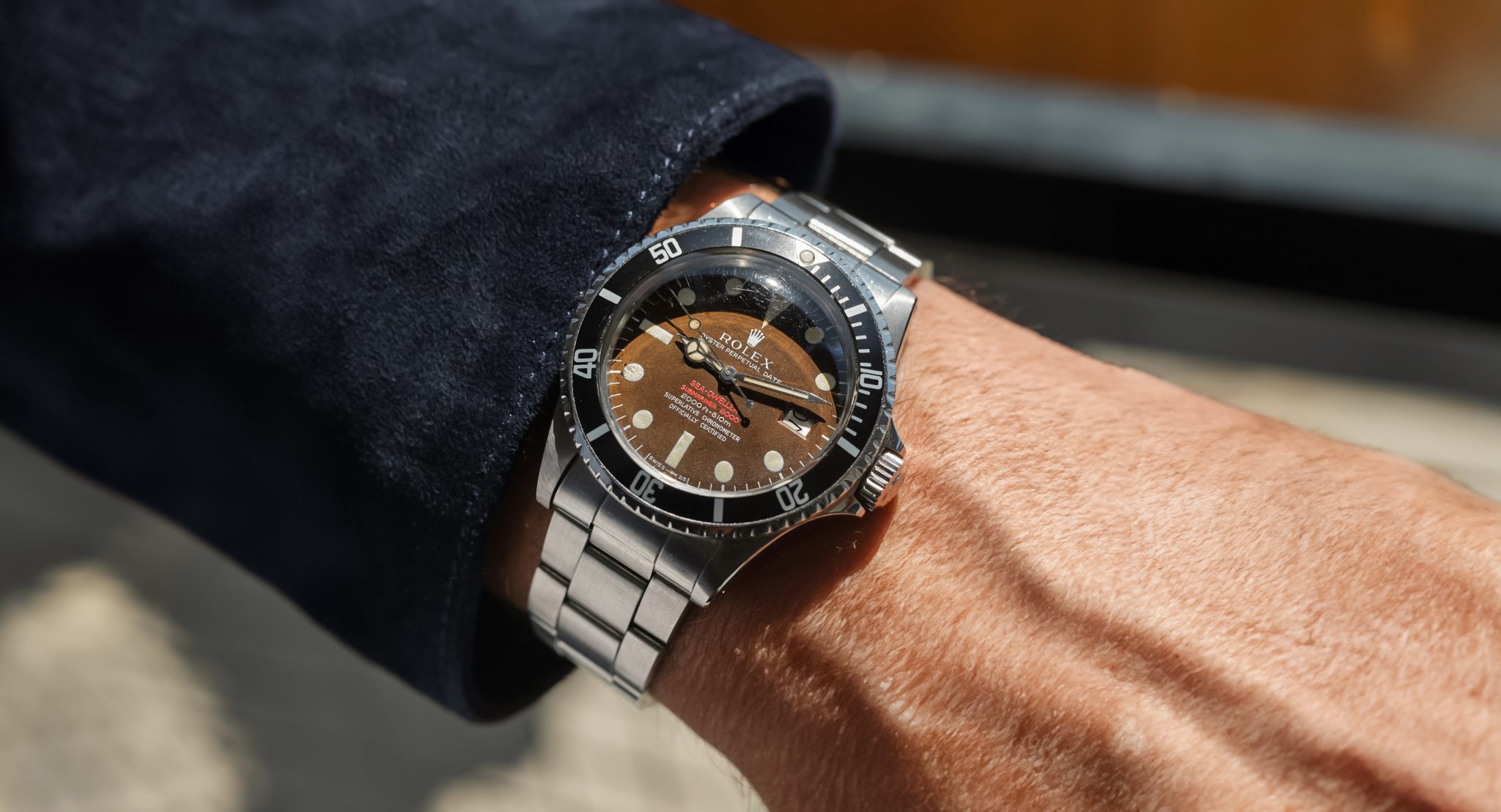
1530 Rolex Oyster Perpetual Date
Long time readers will know by the rehaut, this is a Rolex that is not what it first appears to be. If you love watches, you’d spot this case from across the room. You’d say ‘Nice Oysterquartz’, and in 19/20 passes, you’d be entirely correct. But this is the one time you’d be off. This is a 1530, it’s mechanical, and it’s what came first. The 1530 confounds expectation, made in just ~1500 examples, the wrist in question is far more likely to be an Oysterquartz. But it’s worth knowing this exists. If you want a mechanical integrated Rolex, your choices aren’t just Midas and Cellini. It’s a good old fashioned, ‘superlative’ chronometer calibre 1570 in this case.


This misstep, if you can call it that, was a result of Rolex’s most uncertain era. To face the quartz crisis head-on, Rolex had decided in 1972 to develop their own revolutionary calibre and not rely on the Beta 21. That monumental project, the Oysterquartz, took a humbling, unexpectedly lengthy, and expensive five years. However, a few years into the project, Rolex had already designed and produced the perfect case for this groundbreaking calibre, strongly influenced by the 5100 ‘Texan’.
Instead of simply waiting for the Oysterquartz to be finished at some uncertain time, Rolex decided to combine this new angular 36mm steel case with their dependable calibre 1570 for the interim. The result was this, the short-lived 1530; an Oysterquartz case with an automatic calibre. Its run lasted from just 1975 until 1977 and the quartz launch, making it one of the shortest production runs ever by some margin. Moreover, these dials vary from the 17000 Oysterquartz considerably. This dial was made for the calibre 1570 and is smaller. To cover the gap Rolex created a wide and steeply angled rehaut. It is not confirmed but widely speculated that this was the first Rolex to use sapphire crystals as well.

Many of the 1530’s silver dials had a tendency to turn a light yellow over time, more than any Oysterquartz did. It isn’t quite a panna or cream dial patina, no. I think lemon may be an appropriate adjective. The 1530 has it all: characterful patina, robust story, integrated cases, mechanical watchmaking, and captures a brief glimpse of a time when Rolex was uncertain. Values have been on a slow and steady climb through the 20s in USD over the last couple years, risen definitely but nothing near the blast off of something like stone Day-Dates. This is the kind of thing we’re all here for, or at least I am. Quite the enthusiast cult classic today. And if bimetal is more your thing, google ref. 1630.
This example is honest and original. It’s not a safe queen, but one to wear. That said, the case has very full original bevels, hard to say from just images if it has been polished but likely not. If so, mercifully light. There are superficial hairlines all over the case which is only indicative of light daily wear. There’s some light patina developing on the hands and dial, all tritium pips are present and matching the hands in an even golden tone. It comes from a well-regarded Belgian retailer, watch only.








